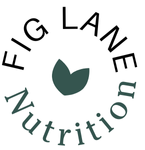You Said My Total Was What?

Do you feel that eating healthy is too expensive? Well you’re not alone. In fact 46% of Americans report the expense of health foods as a barrier to eating healthy according to a survey done by the Cleveland Clinic [1]. And while undoubtedly the cost of groceries have gone up in recent years, there is still hope [2]. Following a budget plant-based diet can help you keep your body nourished and your wallet happy.
Understanding Plant-base vs Plant-based diet
It may not be a surprise that beans are a cheap plant-based protein option but, not everyone wants to go vegan or vegetarian to save a few bucks on groceries. Fortunately, you don’t have to when following a plant-based diet.
Plant-based when referring to a food does often indicate that food is vegan or vegetarian; however, a plant-based diet doesn’t have to be either.
A plant-based diet is more similar to the Mediterranean diet, where the focus is making the plants as the star of the show. Unlike a vegan diet, both of these diets can still include some eggs, poultry, meat and fish. Just in smaller portions and or less frequently.
Because of the confusion this can bring, at Fig Lane Nutrition we use plant-forward when we are able to, to more clearly differentiate.
A Plant-Based diet is associated with several health benefits including reduced cardiovascular disease development and mortality, protective in risk for certain digestive cancers, and with increased compliance a reduction in risk for type 2 diabetes [3,4,5].
However, with the growing popularity of a plant based diet, more plants-based foods have been popping up in the grocery stores. Items such as plant based, cheeses, meats, and snack food. While these products can have their place in mindful eating, they are not likely to be what is associated with the health benefits that come from a traditional plant-based diet. On top of that, these products can be both expensive which can poke a hole in that plan for saving money with a plant based diet.
Budget plant-based diet vs budget regular diet
Whether you follow a plant-based diet or not, the USDA MyPlate “Shop Smart” tips revolve around mainly plant-based foods as affordable alternatives to save money leading to a plant-based diet.
Meat and fish can be expensive to include as your sole sources of protein. However, as mentioned earlier plant-based proteins like beans and lentils offer an affordable alternative.
Using plant based protein to meet some of your protein needs could help you cut some costs on the grocery bill.
Steps to a Budget Plant-Based Diet: Plan, List, and Compare (PLC)
To be direct with it these steps are some of the essential when looking to save with a budget plant-based diet. But they are not the only thing you can to dot save a few bucks on groceries.
Meal Plan
How many times have you gone into the grocery store, bought only items on sale, got home, and realized you have frozen peaches, salmon, and celery? Just me? Well while I’m sure there is something you can do with these. Save yourself time and money from that second trip and meal planning in advance.
You can download Fig Lane Nutrition’s meal planning template (created by a registered dietitian) to make meal planning for your budget plant based diet easier. Meal planning can help prevent those dollars from feeding the trash by making sure you’re using the foods and leftovers you may already have at home.
Pro tip if you gear your meal plan around seasonal produce, this can also lead to savings for the wallet and fresher produce.
It may take extra time in advance to plan meals but, throughout the week it can save you time trying to come up with recipes for the radome ingredients you have. You can also plan easy meals or leftovers for busy days, and what days you’ll have extra time to prep for the coming meals.
Create a Grocery List

Going into the grocery store without a list, especially when hungry, can lead to unexpected scares at the checkout line.
Creating a grocery list from your plant-based meal planning can help prevent those impulsive purchases that can really add up over time. Also, since you spent some time meal planning you’ll know how much you need to prevent over buying.
Check your budget plant-forward diet shopping list that already has a few of our favorites on it.
Compare Prices
When in the grocery store, on their apps, or in their fliers, compare prices to get the best deal on those plant-based favotes. Now I know what you’re thinking. Everything is sold in different quantities however, looking at the grocery shelf tags can usually give you a comparable price per unit. For example with eggs normally it will give you the price per dozen or price per pound with frozen vegetables.
As mentioned with meal planning, the best deals for produce might be on those fruit and vegetables in season.
Aside from sales and seasonal items, looking at store brands can also be another way to save.
Finally, don’t skip the frozen section. Frozen fruits and vegetables are just as if not more nutritious than fresh and may be at a lower price point.
Time Over Convenience
Unfortunately, convenient items like canned beans vs dried that have to be cooked tend to be more expensive. However, doing these two things can help you save both time and money over time.
- Cook items in bulk that can be frozen and reheated well.
- Buying the stables in bulk, that will last in the freezer or on the shelf, can help to save on cost over time. Great examples of these are:
Fruits and vegetables:
- Frozen vegetables steamer bags
- Frozen pre cut vegetables
- Low sodium canned vegetables
- Frozen fruit
- Fruit cups or canned fruit packed in juice
- Bulk fresh produce that can be frozen (ex. Spinach or broccoli)
Protein:
- Frozen grilled chicken
- Frozen peas
- Frozen Edamame
- Canned beans
- Canned fish
- Tofu (yes you can freeze it!)
- Shredded rotisserie chicken
- Microwavable plant-based protein kits
Carbs/starches:
- Microwaveable pastas, rices, and grains packets
- Breads that you can freeze
- Frozen diced or shredded potatoes
Remember to check that price per unit to compare, not everything comes out cheaper just because it is bigger.
Take away
Looking to save on groceries and a budget plant based diet may just go hand and hand to support a healthy body and wallet for those who don’t plan on going vegan or vegetarian. However, it is essential to meal planning, making a grocery list, and comparing prices to get the best deals and keep those vegetables from going into the barrel at the end of the week. Since saving money sometimes means sacrificing convenience, try cooking items in bulk that freeze and reheat well and compare prices to save on shelf stable and freezer staples in bulk.
